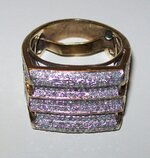dirtdigger1581
Hero Member
- Jun 18, 2011
- 591
- 270
- Detector(s) used
- Minelab E-trac, Minelab Excalibur II 1000, Garrett AT Pro, Teknetics T2
- Primary Interest:
- Metal Detecting
I'm thinking about buying a PI machine for hunting the wet sand and shallow water(up to chest deep) of a salt water beach. I'm wondering what the opinions of everyone here are as to what PI machine is best for this application. I currently use an Excal II for the beach and it's been great, but I've heard there is a big depth advantage over the Excal when going to a PI machine. How deep can they actually get compared to the Excal? I don't mind digging a few more targets while on the beach if it gets me a few more goodies that are missed by the Excal. What's everyone's take on this? And what does anyone have experience with? Thanks for your help!
Happy Hunting!
-Nate
Happy Hunting!
-Nate
Upvote
0






 I was afforded the opportunity last week to play with a sand shark and can say it was a delight to use. Your finds as well as Terry's prove that it's a serious contender in the beach hunting arena. The sand shark will be at the top of my list when I make my PI purchase. There very well may be some short-comings of this machine at certain places, but at Virginia Beach where I tested it out, I had a great time with it.
I was afforded the opportunity last week to play with a sand shark and can say it was a delight to use. Your finds as well as Terry's prove that it's a serious contender in the beach hunting arena. The sand shark will be at the top of my list when I make my PI purchase. There very well may be some short-comings of this machine at certain places, but at Virginia Beach where I tested it out, I had a great time with it.
